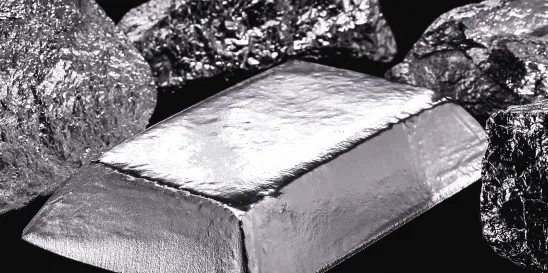On October 4, 2023, U.S. producers of aluminum extrusions filed antidumping duty (AD) and countervailing duty (CVD) petitions with the U.S. Department of Commerce (DOC) and the U.S. International Trade Commission (ITC), seeking to impose extra tariffs on imports of aluminum extrusions and products made from them. The number of countries involved is unusually large, with separate AD cases on:
- Colombia
- The Dominican Republic
- Ecuador
- India
- Indonesia
- Italy
- Malaysia
- Mexico
- China
- South Korea
- Taiwan
- Turkey
- The United Arab Emirates
- Vietnam
In addition, the U.S. producers also are seeking the initiation of parallel CVD cases on imports from China, Indonesia, Mexico, and Turkey.
This case will have extensive impacts on many different U.S. importers and consumers, for a number of reasons:
- Aluminum extrusions are used in a wide variety of products.
- The scope is defined based upon the type of production process used, rather than by types of physical products, which draws in an unusually wide range of products.
- The case is one of the largest in recent years, with imports of aluminum extrusions from the 15 countries amounting to nearly $3.2 billion in 2022.
- AD and CVD orders on Aluminum Extrusions from China have been in place since 2011; the new petitions seek to expand on the scope of these orders, both by capturing various additional types of aluminum extrusions and also the number of countries covered.
If the ITC and DOC make preliminary affirmative determinations — which likely will happen in early March 2024 — then U.S. importers will be required to post cash deposits in the amounts of the estimated AD and CVD duties for all entries of covered aluminum extrusion products. The preliminary AD/CVD rates can change in the final DOC determinations.
The earlier aluminum extrusions case has a notoriously complex scope, as it seeks to cover a wide range of products that are produced using an extrusion process. Unlike most cases, which cover a defined set of products, the products covered by both the original and the new aluminum extrusions cases are mostly defined based upon the production process. Thus, such widely ranging products as door thresholds, fence posts, and screen doors can be covered, provided that they are produced using an aluminum extrusions process and do not feature a lot of additional materials. For reference, the full scope is detailed below.
Antidumping and countervailing duties can be quite high — into the triple digits. They are paid entirely by the importer of record, which generally is the U.S. importer rather than the foreign manufacturer. Thus, it is essential that any company that imports aluminum extrusions, or products that primarily are made out of aluminum extrusions, review its imports and determine the potential impact on its imports and the cost of importing the same. Provisional measures are likely to be in place by early March 2024 (if the preliminary phase is extended, as commonly occurs), meaning imports of record have less than five months to find alternative sources of supply, to renegotiate supply contracts, and to take other steps to manage the fallout from what will likely be the imposition of high tariffs on most of the major sources of imported aluminum extrusions. Further, due to the complicated nature of the scope of the case, careful consideration as to which products will be impacted also likely needs to occur.
It is likely that the AD and CVD cases on aluminum extrusions will be strongly contested due to the prominence of the product, the complex scope of the case, the amount of trade involved, and the inter-relationship with an already existing antidumping duty order. If you would like to find out more about these investigations, would like guidance regarding how the investigations potentially will impact your imports, or potentially to participate in the litigation to protect your interests, please contact the author at: ghusisian@foley.com or 1.202.945.6149.
Appendix: Product Scope
The merchandise subject to this investigation is aluminum extrusions, regardless of form, finishing, or fabrication; whether assembled with other parts or unassembled; whether coated, painted, anodized, or thermally improved. Aluminum extrusions are shapes and forms, produced by an extrusion process, made from aluminum alloys having metallic elements corresponding to the alloy series designations published by the Aluminum Association commencing with the numbers 1, 3, and 6 (or proprietary equivalents or other certifying body equivalents). Specifically, subject aluminum extrusions made from an aluminum alloy with an Aluminum Association series designation commencing with the number 1 contain not less than 99% aluminum by weight. Subject aluminum extrusions made from an aluminum alloy with an Aluminum Association series designation commencing with the number 3 contain manganese as the major alloying element, with manganese accounting for not more than 3% of total materials by weight. Subject aluminum extrusions made from an aluminum alloy with an Aluminum Association series designation commencing with the number 6 contain magnesium and silicon as the major alloying elements, with magnesium accounting for at least 0.1% but not more than 2% of total materials by weight, and silicon accounting for at least 0.1% but not more than 3% of total materials by weight. The scope also includes merchandise made from an aluminum alloy with an Aluminum Association series designation commencing with the number 5 (or proprietary equivalents or other certifying body equivalents) that have a magnesium content accounting for up to but not more than 2% of total materials by weight.
The country of origin of the aluminum extrusion is determined by where the metal is extruded (i.e., pressed through a die).
Imports of the subject merchandise are primarily provided for under the following categories of the Harmonized Tariff Schedule of the United States (HTSUS): 7604.10.1000; 7604.10.3000; 7604.10.5000; 7604.21.0010; 7604.21.0090; 7604.29.1010; 7604.29.1090; 7604.29.3060; 7604.29.3090; 7604.29.5050; 7604.29.5090; 7608.10.0030; 7608.10.0090; 7608.20.0030; 7608.20.0090; 7609.00.0000; 7610.10.0010; 7610.10.0020; 7610.10.0030; 7610.90.0040; and 7610.90.0080.
Imports of the subject merchandise, including subject merchandise entered as parts of other products, may also be classifiable under the following additional HTSUS categories, as well as other HTSUS categories: 6603.90.8100; 7606.12.3091; 7606.12.3096; 7615.10.2015; 7615.10.2025; 7615.10.3015; 7615.10.3025; 7615.10.5020; 7615.10.5040; 7615.10.7125; 7615.10.7130; 7615.10.7155; 7615.10.7180; 7615.10.9100; 7615.20.0000; 7616.10.9090; 7616.99.1000; 7616.99.5130; 7616.99.5140; 7616.99.5190; 8302.10.3000; 8302.10.6030; 8302.10.6060; 8302.10.6090; 8302.20.0000; 8302.30.3010; 8302.30.3060; 8302.41.3000; 8302.41.6015; 8302.41.6045; 8302.41.6050; 8302.41.6080; 8302.42.3010; 8302.42.3015; 8302.42.3065; 8302.49.6035; 8302.49.6045; 8302.49.6055; 8302.49.6085; 8302.50.0000; 8302.60.9000; 8305.10.0050; 8306.30.0000; 8414.59.6590; 8415.90.8045; 8418.99.8005; 8418.99.8050; 8418.99.8060; 8419.50.5000; 8419.90.1000; 8422.90.0640; 8424.90.9080; 8473.30.2000; 8473.30.5100; 8479.89.9599; 8479.90.8500; 8479.90.9596; 8481.90.9060; 8481.90.9085; 8486.90.0000; 8487.90.0080; 8503.00.9520; 8508.70.0000; 8513.90.2000; 8515.90.2000; 8516.90.5000; 8516.90.8050; 8517.71.0000; 8517.79.0000; 8529.90.7300; 8529.90.9760; 8536.90.8585; 8538.10.0000; 8541.90.0000; 8543.90.8885; 8708.10.3050; 8708.29.5160; 8708.80.6590; 8708.99.6890; 8807.30.0060; 9013.90.7000 9013.90.8000; 9031.90.9195; 9401.99.9081; 9403.10.0040; 9403.20.0086; 9403.91.0005; 9403.91.0010; 9403.91.0080; 9403.99.1040; 9403.99.1050; 9403.99.1085; 9403.99.2040; 9403.99.2080; 9403.99.3005; 9403.99.3010; 9403.99.3080; 9403.99.4004; 9403.99.4010; 9403.99.4080; 9403.99.5005; 9403.99.5010; 9403.99.5080; 9403.99.9010; 9403.99.9015; 9403.99.9020; 9403.99.9040; 9403.99.9045; 9403.99.9051; 9403.99.9061; 9405.99.4020; 9506.11.4080; 9506.51.4000; 9506.51.6000; 9506.59.4040; 9506. 70.2090; 9506.91.0010; 9506.91.0020; 9506.91.0030; 9506.99.0510; 9506.99.0520; 9506.99.0530; 9506.99.1500; 9506.99.2000; 9506.99.2580; 9506.99.2800; 9506.99.5500; 9506.99.6080; 9507.30.2000; 9507.30.4000; 9507.30.6000; 9507.30.8000; 9507.90.6000; and 9603.90.8050.
The scope includes a non-exhaustive list of further processed merchandise that includes aluminum extrusions that Petitioners intend to be included within the scope. Such products, which include goods like solar panel mounting systems, would be subject to any duties ultimately imposed, but the duties would only be assessed on the value of the aluminum extrusion portion of the merchandise (whether assembled or unassembled). Other examples of in-scope merchandise include a wide variety of products used in the building and construction, transportation, renewable energy, and engineered product industries.
In addition, the proposed scope of the case carves out a number of products, as follows:
Excluded Aluminum Products
There are a number of exclusions from the scope of the investigation, including:
- Assembled merchandise containing non-extruded aluminum components beyond fasteners that is not part or subassembly of a larger product or system and that is used as imported without undergoing after importation any processing, fabrication, finishing, or assembly or the addition of parts or material, regardless of whether the additional parts or materials are interchangeable (e.g., windows with glass, door units with door panel and glass, motor vehicles, trailers, furniture, appliances, solar panels).
- Aluminum extrusions made from an aluminum alloy with an Aluminum Association series designations commencing with the number 2, 5, or 7 (or other certifying body equivalents)
- Aluminum alloy sheet or plates produced by means other than the extrusion process, such as continuous casting or rolling.
- Unwrought aluminum.
- Collapsible tubular containers composed of alloy code 1080A and meet certain dimension limits.
- Rectangular wire, imported in bulk rolls or precut strips and produced from continuously cast rolled aluminum wire rod, which is subsequently extruded to dimension to form rectangular wire with or without rounded edges.




 />i
/>i

